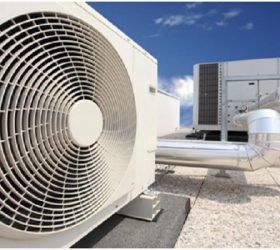The installation and fabrication of Heating, Ventilation and Air Condition ductwork is carried out to offshore installation standard to make sure that rig will have a safe HVAC system, operating at its maximum efficiency. Certification companies are required to inspect and monitor the Heating, Ventilation and Air Condition system at every stage.
The ductwork extracts and supplies air from various areas of the offshore rig installation, most of it is hazardous and critical areas, as well as essential and dangerous systems. There are multiple pieces of Heating, Ventilation and Air Condition equipment that is fitted to the ducting, and they are installed as the installation of the ductwork progresses.
In this article, we will take a closer look at offshore gas and oil platform Heating, Ventilation and AC installation and fabrication. We can start by having a closer look at various HVAC apparatus and their purpose in theplatform’s system.
Click here to find out more about HVAC system.
Heating, Ventilation and Air Condition offshore fabrication techniques
The ductwork is created in individual spools from fabrication drawings, generally from four-millimeter mild steel sheets, three-millimeter stainless steel sheets. These sheets that are being used for ductwork are usually exposed to the elements, reducing them between one millimeter to one and a half millimeter for internal round sections of stainless-steel ducts. As most offshore ducting is manufactured using mild steel sheets, we will examine the installation and fabrication of mild steel sheet ducting.
After the sheet has been cut to the desired size using the guillotine, it is bend to its required shape using the bending machine, and all the open edges welded. All the flanges need to be cut from the flat bar, punch holes for them and weld it into the rectangular dimensions and shape of the duct that it will be welded to.
The flanges are welded to the duct, making sure that you keep the edges parallel to the duct edges. The stiffeners are fused into the duct spool with the earth bosses. Once they are completed, the flange faces are then given a run over, using a grinder to remove all the weld splatter. After that, the ducts are then given a spool number of the fabrication drawings.
The number is usually stamped into the plate, and the plate will be welded into the duct. Once enough spools have been created to make a couple of truckloads, the ducts are then sent to an offsite to be galvanized using hot dipping. On the return trip back to the construction site, the spools are examined for galvanizing quality and stored awaiting for the installation.
Spools that contain the right angle will be fitted with turning vanes. They are made from stainless steel to prevent internal erosion of the plates by redirecting the wind around the corner going to the next segment. Because of this, the galvanized mild steel and the stainless steel will cause galvanic corrosion, during contact, so the turning vanes are insulated from the steel plates using thin pieces of material like polyurethane laminated. Most offshore HVAC companies use commercial polyurethane laminated material for this purpose.
Heating, Ventilation and Air Condition installation equipment
Air handling units
Air handling units are large steel modules that contain heating, air-condition and plenum equipment along with the discharge and suction filters. Most, if not all modern ones also accommodate the main centrifugal fans,
The centrifugal fan
These are considered as the primary system fan of the Heating, Ventilation and Air Condition. It housed a dedicated HVAC fan room in the air handling unit system. Either way, they should need to be from below the deck, away from the prevailing wind, as well as a dangerous drain or sprays that are blown by the wind.
Fire dampers
They are manufactured using stainless steel and designed with pneumatically open-fail shut operations. It shuts down the flow of the breeze on fire situations or gas escape.
Manual dampers
This equipment is usually manufactured from galvanized steel or stainless-steel plate. It is being used to balance the Heating, Ventilation and Air Condition system.
Attenuators
They are silencers that cut the noise in the air flowing through the HVAC ducting.
Offshore Heating, Ventilation and Air Condition installation methods
As we have seen from the previous sections and the introduction, the installation of the ducts is ongoing as the rig construction is in progress, especially as the place becomes less and less accessible with the installation of systems like the cable racks and the piping.




